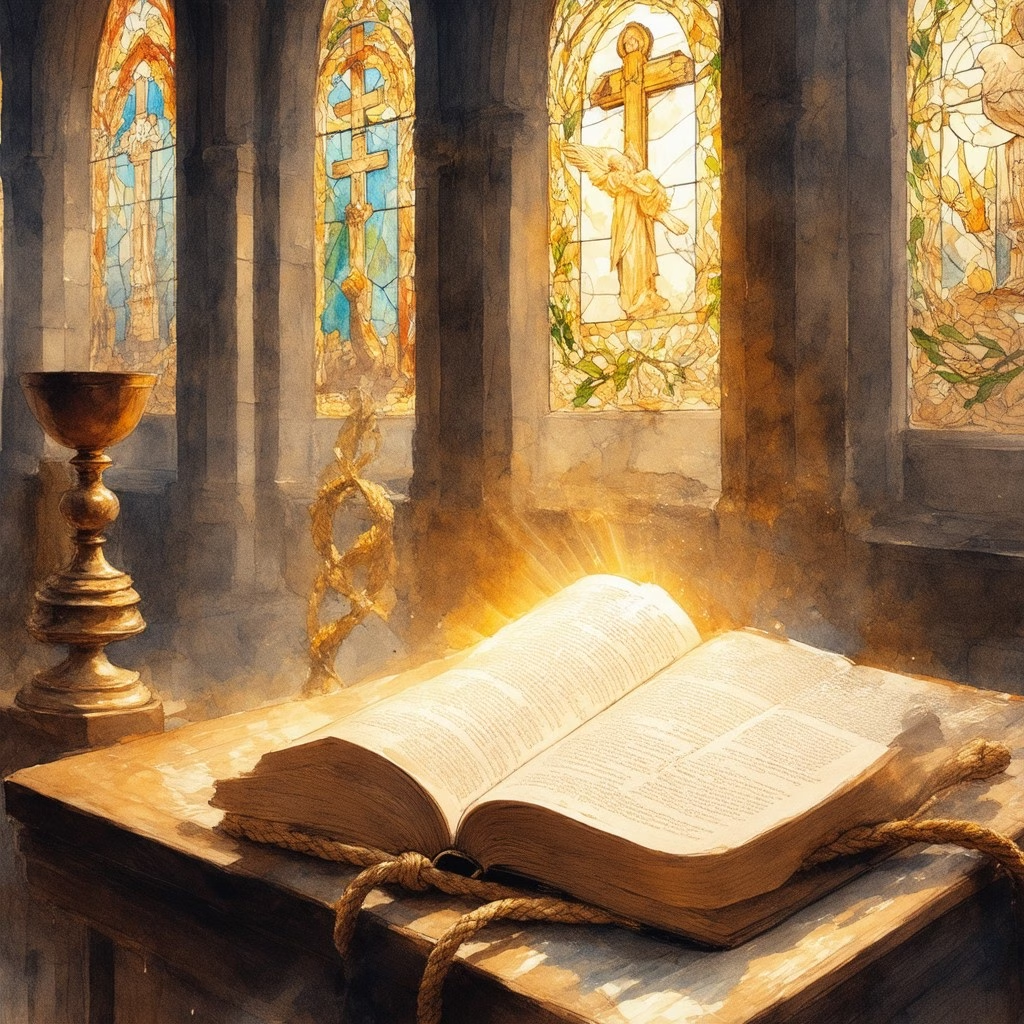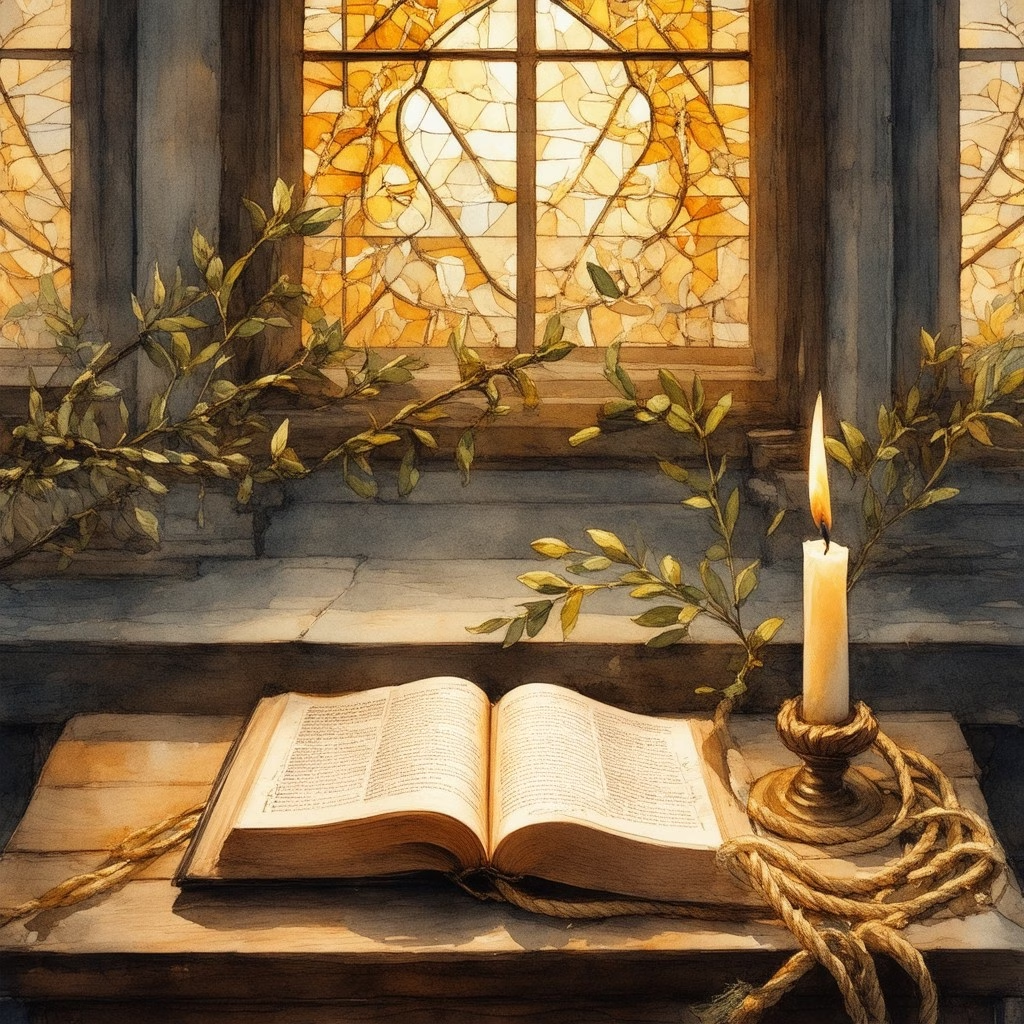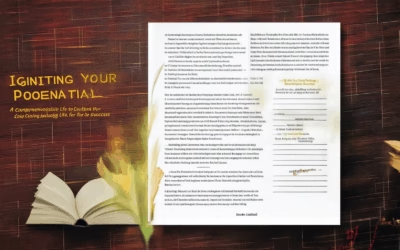Key Takeaways
- Catholic Mass readings for today follow a structured Lectionary cycle, providing a rich and unified scriptural narrative across the liturgical year.
- The two readings in Mass—Old Testament and New Testament—highlight the continuity of salvation history and deepen understanding of God’s covenant and Christ’s fulfillment.
- The opening prayer, invoking the Holy Spirit, prepares the faithful spiritually to engage fully with the daily catholic readings and Mass liturgy.
- The Catholic Church emphasizes guided Scripture reading within tradition and Magisterium authority to ensure correct interpretation and prevent division.
- The priest’s cincture symbolizes purity and readiness to serve, visually reinforcing the sacredness of the Mass and its scriptural focus.
- Resources like the USCCB, EWTN, and Global Ministries Online offer trustworthy access to today’s catholic mass readings and reflections worldwide, including local adaptations for the UK and Philippines.
Discover the profound richness of catholic mass readings for today as we explore the Scripture, prayers, and liturgical traditions that shape each celebration of the Mass. Whether you seek to understand why there are two readings in the Catholic Mass or wonder about the significance of the opening prayers, this article offers clear insights grounded in faith and tradition. We will delve into how the Church selects readings according to the liturgical calendar, explain the current cycle of readings, and address common questions such as why the Catholic Church encourages guided Scripture engagement over private Bible reading. Alongside reflections and trusted resources, including catholic readings for today and official catholic mass readings, this guide will deepen your appreciation for today’s catholic mass readings and enrich your spiritual journey. Join us as we uncover the meaning behind the daily catholic readings and the sacred rhythms that invite us into a closer walk with Christ through the Mass.
Why are there two readings in Catholic Mass?
The Catholic Mass includes two readings to deepen the congregation’s understanding of Scripture and to highlight the continuity between the Old and New Testaments. This practice enriches the liturgical experience by presenting a fuller narrative of God’s plan for salvation, connecting ancient promises with their fulfillment in Christ. The dual readings serve as a foundation for the homily and encourage active engagement with the Word of God during today’s Catholic mass readings.
The Structure and Purpose of Catholic Mass Readings
The structure of the Catholic mass readings for today follows a deliberate pattern designed to illuminate the unity of Scripture. The first reading is typically drawn from the Old Testament, including books of the Prophets, historical accounts, or wisdom literature. During the Easter season, this reading may come from the Acts of the Apostles. Its primary purpose is to present the foundation of salvation history, revealing how God’s covenant with His people unfolds over time. This reading emphasizes the promises and prophecies that foreshadow the coming of Jesus Christ.
The second reading, usually taken from the New Testament, often consists of an Epistle or letter written by the apostles such as St. Paul, St. Peter, or St. John. In the Easter season, it may also be from the Acts of the Apostles. This reading highlights the teachings and experiences of the early Church, explaining and fulfilling the Old Testament promises. Together, these readings provide a comprehensive narrative that traces God’s relationship with humanity from creation through Christ and the early Church.
- Unity and Continuity of Scripture: The two readings demonstrate how the Old Testament prepares for Christ and how the New Testament fulfills those promises, reflecting the Church’s teaching on salvation history (Catechism of the Catholic Church, 129-130).
- Scriptural Foundation for the Homily: The homily is based on these readings, helping the faithful interpret and apply God’s Word in their daily lives.
- Engagement and Reflection: Hearing both readings fosters spiritual growth and communal faith by encouraging active listening and reflection during the liturgy.
This dual reading format is rooted in early Christian tradition and codified in the Roman Missal, ensuring that today’s catholic mass readings offer a balanced and rich scriptural proclamation during the Liturgy of the Word.
Understanding the Role of the First and Second Readings in Today’s Catholic Mass
In today’s catholic readings, the first and second readings serve distinct yet complementary roles that deepen our understanding of God’s revelation. The first reading, often from the Old Testament, invites us to reflect on the history and promises that set the stage for Christ’s coming. It reminds us of God’s enduring covenant and faithfulness throughout generations, which is especially meaningful in daily catholic readings where the continuity of salvation history is emphasized.
The second reading, typically from the New Testament, brings us into the lived experience of the early Church and the apostolic teachings that explain the significance of Christ’s life, death, and resurrection. This reading reinforces the message of hope and transformation found in the gospel and connects the faithful to the ongoing mission of the Church.
By hearing both readings during the mass, we are invited to see the fullness of God’s plan and to engage more deeply with catholic readings for today and reflections that inspire our faith journey. This approach enriches the daily reading for mass catholic, making the Word of God accessible and relevant to our lives.

What is the opening prayer for Mass today?
Exploring the Opening Prayers in Daily Catholic Readings
The opening prayer for Mass today is the traditional invocation of the Holy Spirit, often called the “Come, Holy Spirit” prayer. This prayer asks the Holy Spirit to fill the hearts of the faithful and kindle the fire of divine love within them. The full prayer is:
“Come, Holy Spirit, fill the hearts of your faithful and kindle in them the fire of your love. Send forth your Spirit and they shall be created. And You shall renew the face of the earth.”
Rooted deeply in Scripture, this prayer reflects passages such as Psalm 104:30, which says, “When you send forth your Spirit, they are created.” It is commonly used at the beginning of Mass to invoke the presence and guidance of the Holy Spirit during the liturgy. This invocation emphasizes spiritual renewal, divine inspiration, and the transformative power of God’s love.
Often recited during Pentecost and other solemn occasions, the prayer highlights the Holy Spirit’s vital role in sanctification and communal worship, as outlined in the Catechism of the Catholic Church (CCC 683-686). For those seeking further liturgical context and daily prayers, the USCCB daily readings provide official Catholic Mass readings and prayers, including the opening prayers for each day’s Mass.
How Opening Prayers Set the Tone for Today’s Catholic Mass Readings
Opening prayers play a crucial role in preparing the hearts and minds of the congregation for the sacred encounter with God through the catholic mass readings for today. These prayers create a spiritual atmosphere that aligns with the themes of the daily catholic readings and invite the faithful to enter into deeper reflection and worship.
By invoking the Holy Spirit, the opening prayer fosters an openness to divine guidance, helping worshippers to receive the messages contained in today’s catholic mass readings with reverence and understanding. This spiritual preparation enhances the impact of the readings for mass today, allowing the Word of God to resonate more profoundly in the lives of the faithful.
In addition, the opening prayer connects the congregation to the broader tradition of the Church, linking today’s liturgy with centuries of Catholic worship. This connection enriches the experience of daily reading for mass and encourages ongoing engagement with the Scriptures. For those interested in exploring more about how these prayers and readings work together, resources like catholic readings for today and reflections offer valuable insights.
How does the Catholic Church choose readings for Mass?
The Process Behind Selecting Catholic Readings for Today and Reflections
The Catholic Church selects readings for Mass through a carefully structured system called the Lectionary, a liturgical book containing scripture passages designated for use throughout the liturgical year. These catholic mass readings for today are not chosen individually by priests or local parishes but are universally prescribed by the Church to ensure consistency and theological coherence in worship worldwide.
The Lectionary is organized into a three-year cycle (Years A, B, and C) for Sundays and a two-year cycle for weekdays, allowing the faithful to hear a broad and representative selection of Scripture over time. Typically, the daily catholic readings include a passage from the Old Testament, a Psalm, a New Testament epistle, and a Gospel reading. This structure emphasizes the unity of Scripture and highlights the fulfillment of Old Testament prophecies in the New Testament.
The selection process is overseen by the Vatican’s Congregation for Divine Worship and the Discipline of the Sacraments, ensuring that the chosen texts align with liturgical seasons, feast days, and the overall theological themes of the Church. This system reflects the Church’s commitment to catechesis, spiritual growth, and the proclamation of the Gospel in a way that is accessible and meaningful to the global Catholic community.
Rooted in early Christian worship traditions and refined through Church councils and papal directives, such as those following the Second Vatican Council, the Lectionary fosters active participation in the liturgy and highlights the importance of Scripture in the life of the Church. For those seeking to explore catholic readings for today and reflections, this system provides a rich foundation for daily spiritual nourishment.
The Liturgical Calendar’s Influence on Today’s Catholic Mass Readings
The liturgical calendar plays a pivotal role in shaping today’s catholic mass readings. It organizes the Church year into seasons such as Advent, Christmas, Lent, Easter, and Ordinary Time, each with distinct themes and scriptural emphases. This calendar guides the selection of catholic mass today readings to correspond with the spiritual focus of each season, deepening the faithful’s engagement with the mysteries of Christ’s life, death, and resurrection.
For example, during Lent, the readings often center on repentance, conversion, and preparation for Easter, while Advent readings anticipate the coming of Christ. The calendar also highlights feast days of saints and solemnities, which influence the choice of readings for mass today to honor their witness and teachings.
This liturgical rhythm ensures that daily reading mass catholic is not random but purposeful, connecting believers worldwide in a shared journey of faith. It also enriches personal devotion and reflection, as seen in resources offering today’s catholic reading and daily reading for mass insights that align with the liturgical calendar.
What cycle of readings is the Catholic Church in right now?
The Catholic Church follows a structured cycle of Scripture readings known as the Lectionary, which is organized into two main cycles: one for Sundays and solemnities, and another for weekdays. The Sunday Lectionary operates on a three-year cycle labeled Year A, Year B, and Year C, designed to provide a comprehensive exposure to the Bible over time. Each year emphasizes a different Synoptic Gospel: Year A focuses primarily on the Gospel of Matthew, Year B on the Gospel of Mark, and Year C on the Gospel of Luke, with readings from the Gospel of John interspersed during certain liturgical seasons such as Lent and Easter.
As of the current liturgical calendar, the Church is in Year A, which began on the First Sunday of Advent, November 27, 2022, and will continue through to the Feast of Christ the King on November 26, 2023. This cycle emphasizes teachings and events from the Gospel of Matthew, highlighting themes of Jesus’ fulfillment of Old Testament prophecy and his role as the Messiah.
The weekday Lectionary follows a two-year cycle, Year I and Year II, alternating readings primarily from the Old Testament, Psalms, and New Testament letters, allowing for a broad and varied scriptural engagement throughout the week.
This cyclical system of readings is established by the General Instruction of the Roman Missal and is detailed by the United States Conference of Catholic Bishops (USCCB), ensuring uniformity and richness in the liturgical proclamation of Scripture across the global Catholic community. For those seeking to explore catholic readings for today and reflections, understanding the current cycle is essential to fully appreciate the context of catholic mass readings for today.
Overview of the Current Cycle of Daily Readings of the Mass
Today’s Catholic mass readings are shaped by the Lectionary cycle, which ensures that the faithful receive a balanced and rich exposure to Scripture throughout the liturgical year. The daily readings for mass today include selections from the Old Testament, Psalms, New Testament letters, and the Gospels, arranged to complement the liturgical season and feast days.
In Year A, the Gospel readings for Sundays and solemnities predominantly come from Matthew, offering a detailed account of Jesus’ life, teachings, and mission. The weekday readings alternate between Year I and Year II, providing a diverse scriptural diet that deepens understanding and spiritual growth. This structure supports the practice of daily catholic readings and encourages participation in the daily reading mass catholic tradition.
For those interested in accessing today’s catholic mass readings or daily reading for mass, resources such as the USCCB daily readings page and trusted platforms like Global Ministries Online provide reliable and up-to-date texts. This accessibility helps believers engage meaningfully with Scripture, fostering a deeper connection to the Word of God in everyday life.
How the Cycle Affects Sunday Mass Readings for Today and Tomorrow
The three-year Sunday cycle profoundly influences the themes and messages conveyed in today’s mass readings and those for the upcoming Sunday. Since the Church is currently in Year A, the Sunday readings focus on the Gospel of Matthew, which emphasizes Jesus as the fulfillment of Old Testament prophecy and the promised Messiah. This focus enriches the liturgical experience by connecting the New Testament teachings with the Jewish roots of the Christian faith.
Understanding the cycle helps the faithful anticipate the progression of Scripture throughout the liturgical year, making catholic mass readings for today sunday especially meaningful. It also highlights the continuity and unity of the Bible, as each reading builds upon the last, weaving a comprehensive narrative of salvation history.
For Catholics in different regions, such as the UK or the Philippines, the cycle remains consistent, though local adaptations may occur. Accessing catholic mass readings for today uk or catholic mass readings for today philippines ensures that believers worldwide can participate fully in the liturgical rhythm, united by the same cycle of readings.
To explore more about today’s catholic reading and how the cycle shapes the liturgy, visit the USCCB daily readings or the Vatican official site for authoritative guidance on the Lectionary and liturgical calendar.

Why does the Catholic Church discourage Bible reading?
It is a common misconception that the Catholic Church discourages Bible reading. In reality, the Church encourages all the faithful to engage deeply with Scripture, but it emphasizes the importance of proper interpretation within the framework of Church tradition and teaching. Historically, especially during the Protestant Reformation, the Church highlighted the role of the Magisterium—the Church’s authoritative teaching office—in guiding the understanding of Scripture. This guidance helps prevent misinterpretations and theological divisions that can arise from private, individual readings.
Key reasons for this emphasis include:
- Authority of the Magisterium: Authentic interpretation of the Bible must be done in communion with the Church’s teaching authority to preserve doctrinal unity and safeguard the faith from errors. This ensures Scripture is read in the context of Sacred Tradition and the living teaching office.
- Historical Context: Before vernacular translations were widespread, Bible reading was limited by language barriers and literacy. Latin was the liturgical language, and the Church provided Scripture readings during Mass to make the Word of God accessible to the faithful.
- Concerns about Private Interpretation: Individual interpretation without ecclesial guidance led to conflicting doctrines and schisms during the Reformation. The Church responded by emphasizing the need for interpretive guidance to maintain theological coherence.
- Modern Encouragement of Scripture Reading: The Second Vatican Council’s document Dei Verbum called for greater engagement with Scripture among Catholics. Today, numerous Church resources, Bible study programs, and translations support daily Catholic readings and personal study.
- Scripture in Catholic Worship: The Bible holds a central place in Catholic liturgy, with extensive readings incorporated into the Mass and the Liturgy of the Hours, underscoring its importance in spiritual life.
In summary, the Catholic Church promotes a well-formed, communal, and theologically sound approach to Scripture. This approach respects the Bible’s divine inspiration while recognizing the necessity of interpreting it within the living tradition of the Church to foster unity and correct understanding. For those seeking to deepen their engagement, exploring daily catholic readings and catholic reading today can provide valuable insights and spiritual nourishment.
Addressing Misconceptions About Catholic Daily Bible Reading
Many wonder why the Catholic Church appears cautious about private Bible reading. This caution is rooted not in discouragement but in pastoral care. The Church recognizes that Scripture is a profound and complex text that requires guidance to be rightly understood. Without this, misinterpretations can lead to confusion or even division within the faith community.
Today’s Catholic readings are carefully selected and presented during the Mass to provide a cohesive and theologically sound narrative that connects with the liturgical calendar and the Church’s teachings. This structured approach helps the faithful grow in understanding and faith, ensuring that the daily reading for Mass is both edifying and aligned with Church doctrine.
For those interested in exploring the richness of Scripture within the Catholic tradition, resources such as catholic readings for today and today’s mass readings offer accessible and faithful reflections on the daily readings of the Mass.
The Importance of Guided Reading Versus Private Bible Reading in Catholic Tradition
Guided reading of Scripture within the Catholic tradition is essential for a full and accurate understanding of the Bible. The Church encourages reading the Bible in the context of Sacred Tradition and the teaching authority of the Magisterium. This ensures that the faithful receive the intended message of the Scriptures, free from personal bias or error.
Unlike private Bible reading that may lack theological context, guided reading—such as the readings proclaimed during Mass or studied in community—provides a framework that connects Scripture to the life of the Church and the believer’s spiritual journey. This is why daily Catholic readings are integrated into the liturgy and why many find value in following catholic mass readings for today sunday or regional variations like catholic mass readings for today uk and catholic mass readings for today philippines.
Engaging with Scripture through the Church’s liturgical cycle and trusted resources helps believers grow in faith and understanding, making the daily reading mass catholic experience both enriching and spiritually grounding.
What is the rope called that a priest wears?
The rope that a priest wears is called a cincture. In the Western rites of the Catholic Church, the cincture is a long, rope-like cord, often made of silk or other fine materials, with tasseled or knotted ends. It is tied around the waist over the alb, which is the white liturgical garment worn by clergy during Mass and other religious ceremonies. The cincture serves both a practical and symbolic purpose: it secures the alb and symbolizes chastity and readiness to serve. Variations in color and style of the cincture can correspond to liturgical seasons or specific ranks within the clergy. According to the General Instruction of the Roman Missal (GIRM), the cincture is an important vestment that complements the alb and stole, emphasizing the dignity and solemnity of the priestly office. For further authoritative details on liturgical vestments, the Vatican’s official documents and catechetical resources provide comprehensive explanations.
Understanding the Significance of the Priest’s Rope in Catholic Mass Today Readings
The cincture worn by priests during the Catholic Mass today readings is more than a mere accessory; it holds deep spiritual symbolism that connects the priest’s role to the sacred liturgy. This rope-like vestment symbolizes purity, chastity, and the priest’s commitment to serving God and the Church. As the priest participates in the daily catholic readings and leads the congregation through today’s catholic mass readings, the cincture visually reinforces the solemnity and reverence of the Mass. The color of the cincture may change according to the liturgical calendar, aligning with the themes of the catholic mass readings for today sunday or special feast days, thus enhancing the worship experience. This vestment, together with the alb and stole, helps the faithful focus on the sacredness of the daily reading for mass and the Word of God proclaimed during the catholic readings for today.
The Role of Liturgical Vestments in Enhancing the Catholic Mass Experience
Liturgical vestments, including the cincture, play a vital role in enriching the Catholic Mass experience by visually expressing theological truths and the sacred nature of the celebration. During today’s catholic mass readings, these vestments help distinguish the clergy and underscore their role as mediators of the Word and sacraments. The careful selection and use of vestments correspond with the daily readings of the mass and the liturgical season, creating a cohesive worship atmosphere that supports spiritual reflection and devotion. For example, during Advent or Lent, the colors and styles of vestments, including the cincture, reflect penitence and preparation, which complements the themes found in the catholic mass today readings. This thoughtful integration of vestments and readings encourages deeper engagement with the catholic reading today and fosters a more meaningful encounter with God’s Word.
Reflections and Resources for Deepening Understanding of Catholic Mass Readings
Engaging deeply with catholic mass readings for today enriches our spiritual journey and strengthens our connection to God’s Word. Reflecting on today’s catholic readings invites us to meditate on Scripture’s timeless truths and apply them meaningfully in our daily lives. To support this, trusted resources and local variations provide accessible avenues for exploring catholic readings for today and reflections, helping believers worldwide grow in faith and understanding.
Catholic Readings for Today and Reflections EWTN: Trusted Sources for Daily Reading Mass Catholic
The Eternal Word Television Network (EWTN) stands as a reliable source for catholic mass today readings and thoughtful reflections. Their daily presentation of daily catholic readings offers clear, scripturally grounded insights that align with the liturgical calendar, making it easier to follow the daily readings of the mass. EWTN’s reflections help believers grasp the spiritual significance behind each passage, encouraging a deeper engagement with today’s catholic reading.
By regularly consulting EWTN’s resources, Catholics can enhance their understanding of the daily reading for mass and enrich their prayer life. This complements other reputable platforms such as the USCCB daily readings and Catholic daily readings, which also provide official readings for mass today and reflections.
Accessing Catholic Mass Readings for Today UK and Philippines: Local Variations and Availability
While the core structure of catholic mass readings for today remains consistent globally, local adaptations exist to reflect cultural and linguistic contexts, especially in regions like the UK and the Philippines. For example, catholic mass readings for today uk often incorporate approved translations and commentaries suited to the local faithful, ensuring that today’s mass readings resonate deeply with their communities.
Similarly, in the Philippines, where Catholicism is deeply rooted, catholic mass readings for today philippines are widely accessible through diocesan websites and local Catholic media. These resources provide the daily reading mass catholic in formats that accommodate the Filipino language and cultural nuances, fostering a more personal connection to the Scripture.
For those seeking to explore these local variations or access catholic readings today from different regions, platforms like Global Ministries Online offer comprehensive coverage of catholic mass readings for today sunday and weekday readings, tailored to diverse audiences worldwide.




0 Comments